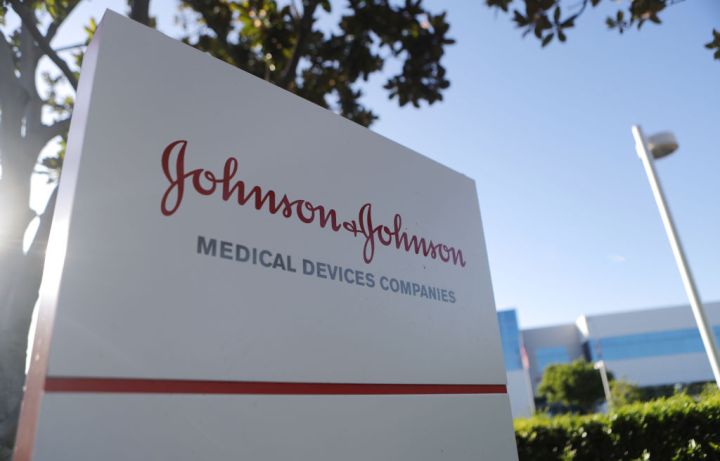
Johnson & Johnson hit with $572 million opioid ruling — what happens now?
Johnson & Johnson hit with $572 million opioid ruling — what happens now?

Stock in the pharmaceutical company Johnson & Johnson was up 2.5% in early trading this morning. This comes after a seven-week trial found that the company downplayed the risks of opioids. A judge in Oklahoma ordered the company to pay $572 million.
The state had asked for much more – $17 billion – yet $572 million is significant and more than twice what Purdue Pharma, the maker of OxyContin, paid to settle before its trial. Johnson & Johnson will appeal. Marketplace Morning Report’s David Brancaccio spoke with Erik Gordon of the University of Michigan’s Ross School of Business about the verdict. Below is an edited transcript of their conversation.
David Brancaccio: This case was brought under a public nuisance law and Oklahoma apparently has a really broad public nuisance law. What’s the significance?
Erik Gordon: So the significance is that these public nuisance laws have been used mostly unsuccessful for things, for example, like guns, lead paint. It’s a pretty creative approach because it allows the plaintiffs – in this case the state of Oklahoma – to recover a lot of money without showing how much each individual drug user was hurt.
Brancaccio: Johnson & Johnson stock went up overnight, in part, we think, because of this verdict. The dollar figure was less than it might have been. But I mean, let’s be real here. This is just the beginning of a series of legal fights, not just for Johnson & Johnson.
Gordon: Oh, this is just the first paragraph of the first page of the first chapter.
Learn about the FDA-approved, misleading claims about OxyContin that helped set off the opioid crisis:
And for more on this country’s decades-long fight against drugs, listen to the latest season of The Uncertain Hour.
Brancaccio: There’s many more of these and … do judges have to be fully guided by what’s happened in Oklahoma?
Gordon: Each judge will decide and each jury will decide according to the law of their state. And in fact we don’t even know what the final verdict is in Oklahoma because Johnson & Johnson is going to appeal this.
Brancaccio: Do you see a lesson in this one Oklahoma verdict for the industry that sells these painkillers?
Gordon: I think there’s a big lesson: Just because you get your product approved by the FDA that gives you a defense against claims that your product is not safe, it is no defense against claims that your marketing is deliberately misleading.
Brancaccio: So, you think there’s going to be perhaps greater attention to what you say in an ad for your drug?
Gordon: I think if you’re intelligent, you’re going to be very careful and maybe not get too close to the lines so that it later looks as if you’re trying to mislead people.
There’s a lot happening in the world. Through it all, Marketplace is here for you.
You rely on Marketplace to break down the world’s events and tell you how it affects you in a fact-based, approachable way. We rely on your financial support to keep making that possible.
Your donation today powers the independent journalism that you rely on. For just $5/month, you can help sustain Marketplace so we can keep reporting on the things that matter to you.


















